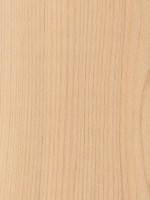First Boat Build, Is Pine ok for frames
This is our first boat build a Double Ender with Transom. We cut our frames out of yellow pine some being radiate pine. Will his wood be strong enough for the frames or should we just recut them now with oak
Tags:
Replies to This Discussion
-
Permalink Reply by Rick Newman on August 5, 2015 at 8:37am
-
Justin, here is a link to a discussion on 'Pine' woods. Perhaps this will help you make a decision. The folks in Oregon that built McKenzie River drift boats assumedly chose lightweight easily available woods. Port Orford Cedar and Alaskan Yellow Cedar were often used. Here's some information from Wood-Database.com to help you understand the properities of each. Here is a link that discusses pine and all of it's variations http://www.wood-database.com/wood-articles/pine-wood-an-overall-guide/ It's too big to post here. on the same website you can look up oak for further comparison. What I am saying is here is the information you need to make an informed decision on what wood to use. You can compare the characteristics of the originally chosen woods and see if they will work for you. One issue is availability of Port Orford and Alaskan Yellow Cedars, do the currently available woods do the same jobs, are the easy to work, do they hold fasteners well, to they resist rot, do they hold a finish and such. Hope this helps.
Rick N
Common Name(s): Port Orford Cedar, Lawson’s Cypress
Scientific Name: Chamaecyparis lawsoniana
Distribution: Pacific northwest United States
Tree Size: 150-200 ft (45-60 m) tall, 4-6 ft (1.2-1.8 m) trunk diameter
Average Dried Weight: 29 lbs/ft3 (465 kg/m3)
Specific Gravity (Basic, 12% MC): .39, .47
Janka Hardness: 590 lbf (2,620 N)
Modulus of Rupture: 12,290 lbf/in2 (84.8 MPa)
Elastic Modulus: 1,646,000 lbf/in2 (11.35 GPa)
Crushing Strength: 6,080 lbf/in2 (41.9 MPa)
Shrinkage: Radial: 4.6%, Tangential: 6.9%, Volumetric: 10.1%, T/R Ratio: 1.5
Common Name(s): Alaskan Yellow Cedar, Nootka Cypress
Scientific Name: Cupressus nootkatensis*
*This species has undergone many reclassifications, see note in comments
Distribution: Northwest coast of North America
Tree Size: 100-120 ft (30-37 m) tall, 4-6 ft (1.2-1.8 m) trunk diameter
Average Dried Weight: 31 lbs/ft3 (495 kg/m3)
Specific Gravity (Basic, 12% MC): .42, .50
Janka Hardness: 580 lbf (2,580 N)
Modulus of Rupture: 11,100 lbf/in2 (76.6 MPa)
Elastic Modulus: 1,420,000 lbf/in2 (9.79 GPa)
Crushing Strength: 6,310 lbf/in2 (43.5 MPa)
Shrinkage: Radial: 2.8%, Tangential: 6.0%, Volumetric: 9.2%, T/R Ratio: 2.1
-
Permalink Reply by Justin McEntire on August 5, 2015 at 11:49am
-
Thanks for the information, southern yellow pine matches up with the suggested woods in all categories except for rot resistance were it's a medium to low rot resistance. Would using marine oil keep these boards from rotting, i would rather now encapsulate
-
Permalink Reply by Rick Newman on August 5, 2015 at 1:29pm
-
Water intrusion will promote rot. Any opening in the wood be it a screw hole, a nail, a ding, end grain will allow allow water to eventually get inside even with epoxy encapsulation unless you can immediately repair any damage and bed every screw in Boat Life Boat Caulk. Water will get in so the greater the rot resistance the less vigilant you have to be. Unfortunately you can't get to every surface to observe and repair. Epoxy is not totally waterproof and it can flex and fail. There is no perfect situation or combination only in my opinion better combinations that last longer.
Rick N
-
Permalink Reply by Mike Thomas on August 5, 2015 at 7:18pm
-
Nice info on that link. I used douglas fir for my frames, looks like a decent choice, but besides that rot you speak of, bugs might destroy my boat ;)
© 2025 Created by Randy Dersham.
Powered by
![]()

